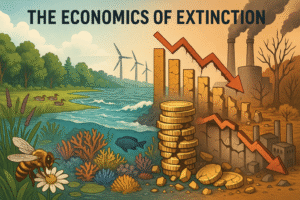Have you ever wondered why loan interest rates fluctuate or why your savings account interest rates change? The answer often lies in a term you might have heard in the news: the repo rate. It’s a tool that the Reserve Bank of India (RBI) uses to control the flow of money in our economy. Understanding the repo rate is essential because it affects everyone — from big businesses to individuals like you and me. So, let’s demystify this economic term in a way that’s easy to grasp and see why it should matter to you.
What is the Repo Rate?
The repo rate is the rate at which commercial banks borrow money from the RBI. Think of it as the price banks pay for borrowing money. When banks have more customers demanding loans than they have cash on hand, they turn to the RBI. The interest they pay for this borrowed money is determined by the repo rate.
This rate is a powerful tool in the RBI’s arsenal to manage the country’s money supply, inflation, and overall economic health. By adjusting the repo rate, the RBI can either make it more expensive or cheaper for banks to borrow money. This, in turn, influences the rates that banks charge their customers for loans. For example, if the RBI increases the repo rate, borrowing becomes more expensive for banks, and they may pass on this cost to consumers by increasing the interest rates on loans and mortgages.

How Does the Repo Rate Affect the Economy?
The repo rate doesn’t just affect banks; it has a ripple effect across the entire economy. When the RBI changes the repo rate, it’s like turning a dial that speeds up or slows down the country’s economic activity. A higher repo rate means borrowing costs more, which can slow down spending and investment, helping to control inflation. On the other hand, a lower repo rate makes borrowing cheaper, encouraging businesses and individuals to spend and invest more, potentially boosting economic growth.
For instance, if inflation – the rate at which prices of goods and services rise – gets too high, the RBI might increase the repo rate. This makes loans more expensive, leading people and businesses to cut back on borrowing and spending, which can help bring inflation down. Conversely, if the economy is sluggish, lowering the repo rate can stimulate financial activity by making loans cheaper, and encouraging people and companies to invest in new projects or make big purchases.
Impact on Everyday Life
Now, let’s bring this closer to home. How does the repo rate affect you personally? Whether you’re taking out a loan for a new house, paying off a car loan, or saving money in a bank account, the repo rate can influence your financial well-being.
For example, if the repo rate goes up and you have a loan with a variable interest rate, your monthly payments might increase. This is because banks will likely raise their lending rates to cover the higher cost of borrowing money from the RBI. On the flip side, if the repo rate decreases, your loan interest rates might drop, reducing your monthly payments.
Savings are also impacted. A higher repo rate can lead to higher savings account interest rates, offering you better returns on your deposits. However, when the repo rate is low, you might earn less interest on your savings.

Why Should You Care?
You might ask, “Why care about the repo rate if I’m not in finance?” The reason is straightforward: the repo rate indirectly affects your financial well-being. By understanding how it works, you can make better decisions about your loans, savings, and investments.
When the repo rate changes, it can affect everything from the interest rates on your home loan to the returns on your fixed deposits. For instance, if you’re planning to buy a house with a loan, a lower repo rate could mean lower monthly repayments. On the other hand, if you’re saving money, a higher repo rate could increase the interest you earn on your savings.
Being aware of the repo rate trends can help you time your financial decisions better, such as when to take out a loan, refinance existing loans, or invest in fixed deposits. For those with loans or investments tied to market rates, staying informed about the repo rate can help anticipate changes in financial obligations or returns.

Conclusion
In conclusion, the repo rate is more than just a financial term used by economists; it’s a crucial indicator that affects the economy, influencing interest rates and financial products. For the common person, understanding the repo rate can lead to more informed decisions about borrowing, saving, and investing. Keeping an eye on it can help you navigate the financial landscape, ensuring you make the most of your money.
So, the next time you hear about the RBI changing the repo rate, remember that it’s not just a piece of economic news — it’s information that could impact your personal and financial life. By staying informed and understanding these economic cues, you can plan and manage your finances more effectively, leading to better financial health and stability.
Author’s Note
As an individual navigating the complexities of financial planning, I’ve always believed in the power of knowledge. This blog aims to shed light on the crucial but often overlooked aspect of our economy, the repo rate. My hope is that by understanding this key economic indicator, readers can make more informed financial decisions and feel empowered in their economic well-being.
G.C., Ecosociosphere contributor.
References and Further Reading
- “Monetary Policy in India: A Modern Macroeconomic Perspective” by Chetan Ghate and Kenneth Kletzer – Offers detailed insights into the monetary policy framework of India, including discussions on the repo rate.
- “Interest Rates, Prices, and Liquidity: Lessons from the Financial Crisis” by Jagjit S. Chadha, Sean Holly – Explores the dynamics of interest rates, including the repo rate, and their impact during financial crises.



